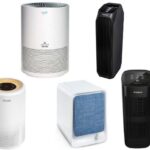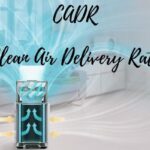Air purifiers are a significant investment to help eliminate odors and air pollutants in your home. Different types of air purifiers exist, depending on the size and feature you need. For instance, if you have pets or allergies, an ozone air purifier is the best option for you.
When deciding which type of air purifier to purchase, consider the purpose of your home: do you reside in a small apartment? Do you live with multiple people? Is there any specific reason why your home needs to be as clean as possible?
This article will go over some common types of air cleaners that may work well for different scenarios.
What Are Air Purifiers?
An air purifier is a device that changes impurities into something else or removes them entirely. When the surrounding air has pollutants, such as pollen and dust, an air purifier can help change it. So, you breathe better by removing these pollutants from your environment.
They might be used for medical purposes like treating asthma or because of allergies, but they’re also useful if you just need to breathe clean and fresh air at home during periods when pollution levels are high (like smoggy days).
Air purifiers are great tools to have for those who suffer from allergies, asthma, respiratory diseases, and COPD. Air pollution can trigger various symptoms such as coughing or wheezing in these patients if they inhale the pollutants present in the air. People need a safe space where they feel comfortable breathing so that their health doesn’t worsen over time without any control over it whatsoever!
In the past few years, air purifiers have become more popular because they can protect us from dangerous pollutants. Pollutants such as PM10s and VOCs are just a few of the elements that pose safety risks to humans when present at high concentrations. In North America, carbon absorbers filter these particles found in our environment; however other technologies capable of passing WHO standards might soon be utilized worldwide too!
Do Air Purifiers Actually Work?
Of course, they do! Don’t be silly. Of course, they work. But for what? To remove smells from the air- and aromatherapy oils as well- of course! Having an expensive, high-performance machine that changes the cabin pressure in your aeroplane is beside the point as there are other essential factors to worry about when you fly (unexpected baggage fees come to mind).
Just make sure it’s at least certified by ENERGY STAR and has no more than 3 preprogrammed speeds, so it doesn’t confuse small children who want to run around inside your house. And yes, asthmatics even love them because filters can be changed every 6 months while everyone else has a filter life span of over.
10 Different Types of Air Purifiers – Which One is Best For You?
Air pollutants are present-day and night in our spaces and constantly expose us to respiratory diseases. That is why it is essential to keep our environment healthy with a type of air purifier, especially for your needs.
The various types of purifiers are perfect for keeping your home, office, or business free of harmful agents caused by mold, humidity, pets, cigarette smoke, kitchen smoke, dust, and mites, among other sources of contamination.
In the market, you get a wide range of air purifiers ideal for both allergy sufferers and asthmatics, according to their functionality, prices, and properties. We offer you here a variety of devices so that you can select the best one to purify your spaces.
However, there are many different kinds of air purifiers, each with its benefits. This article will cover some of the most popular types of purifiers out there. Let’s take a look at the question together.
1. With HEPA filter
The abbreviation HEPA stands for High-Efficiency Particulate Air. An air purifier with this type of filter can retain air particles with a diameter of 0.3 micrometres (one-thousandth of a millimetre), with 99.97% or more effectiveness. In this way, most dust particles and bacteria are filtered out of the air. Bacteria generally have a diameter of about 0.3 to 20 micrometres. Smog, smoke, and viruses are not always filtered through a HEPA filter.
2. Activated carbon
An activated carbon filter is a great way to eliminate bad smells from your home. It traps odors and gasses in its pores, removing them from the air as they pass through it. Some are strong enough to tackle volatile organic compounds such as paint fumes or chemical spills too! Suppose you’ve noticed that larger particles like dust aren’t getting caught by your regular household filters. In that case, activated charcoal will also reduce those pesky allergens that might make their rounds indoors during allergy season.
3. UVLights
If you’re worried about germs in your home, installing germicidal UV lights can help. They’ll kill all the microbes that could potentially make their way into your air conditioning system and then throughout the rest of your house. The best places to install these are near where moisture collects or at an HVAC unit’s evaporator coil (a dehumidifier won’t do much good there). If you want to enjoy virtually germ-free air throughout your house, the Carrier Performance series offers two models of germicidal lights that we will install for you!
4. Ionic air purifier or ionizer
The most promising form of air purification is ionization. If you buy an air purifier that ionizes, the device produces positively and negatively charged ions and spreads them in the room. The ions surround the particles you want to clean up, after which a chemical reaction makes them harmless. Negative ions attach themselves to pollen, mold, cigarette smoke, and dust, among other things, and neutralize their harmful effect.
5. Electrostatic Filters
Electrostatic air purifiers trap the particles in a similar method as other devices. It charges each particle and then collects it within its filter. These filters can be washed before being reused, which is great for those who wish to reuse them instead of spending money on new ones every year or so. However, just like ionizers and ozone generators, electrostatic filters do produce some amount of ozone gas.
If you are looking for an air purifier that can offer top-notch filtration, look no further than the Infinity Air Purifier GAPA. The electrostatic charges in this model help to zap and kill microbes and mold spores within its filter while trapping other pollutants such as particles, germs, or allergens inside of it where they cannot escape.
6. Portable
Portable air purifiers are meant to clean harmful particles like dander and pollen from your room. They’re lightweight, with most weighing less than 20 pounds, making it easy for you to move them around in different rooms of your house quickly. These filters remove 99.97 per cent of airborne particles that are smaller than 0:3 micrometres. These purifiers are a great investment because they’re cost-effective.
7. TiO2 Filtration
The chemical formula TiO2 (titanium dioxide) is used to produce paints that are white. However, it has a different usage when it comes to air purification – the filters in hospital-grade filtration systems like Field Controls’ TRIO unit contain this technology as just one of many components. These types of filters can be excellent for removing germs, smoke, and unpleasant odors from your environment.
8. Pre-filters
The purpose of a pre-filter is to protect the filter from large particles. The best way we can describe it would be to put an umbrella over your head when walking outside to avoid getting wet by raindrops (the larger ones). In this analogy, you’re using the umbrella as protection for yourself and then removing it once all of that nasty rain has passed overhead. This same concept applies to Pre-filters; their job is mainly meant to get rid of catch any big stuff before they reach your HEPA Filter so that everything goes smoothly afterwards.
9. Whole-house air filters
Air filters aren’t as expensive and easy to install. However, they don’t trap the smallest particles in your home as whole-house air purifiers do! Air filters mostly filter out the larger particulate matter but not microorganisms that contribute to allergies or asthma.
Whole-house air filters are beneficial for cleaning the air inside your home. They can be found at non-specialist stores and vary in size depending on their water droplet or dust features, as well as gas volume flow rates.
10. Antibacterial and germicidal filters
Antibacterial and germicidal air purifiers are able to remove allergens that cause flu or cold. The components include UV light, sterilizing heat, and silver, which destroy the pathogens in your home. Such filters can be used by themselves or with a HEPA filter for extra protection against strep throat, colds, and influenza.
How do you choose the best air purifier?
First of all, you need to know the size of the room from which you want to purify the air (in cubic meters). Based on that, you can easily find the right capacity that suits your situation.
Do you already know which particles you would like to remove from the air? Then you can choose the right filter type for that. Do you also want an ionizer in the air purifier? And do you prefer a permanent or replaceable filter?
If you answer these questions, you can buy the best air purifier for your situation. The more expensive types often have a higher capacity, better cleaning quality, and more options than the cheaper variants.
Conclusion
An air purifier is a device that helps remove pollutants from the air. More and more people are using these devices for health reasons. But they also help to keep your home’s indoor air clean because of how they can reduce odors.
If you’re looking for an air purifier, look no further. There are many types of air purifiers that can help clean the air in your home or workplace and make it more comfortable to breathe. It doesn’t matter if you have allergies, asthma, or just want cleaner, fresher breathable air; there is a type of cleaner made specifically for your needs!
If you are interested in purchasing an air purifier or want to learn more about them, make sure to visit our website for helpful information and a list of helpful resources on how to find the right one for your home.





8 thoughts on “10 Types of Air Purifiers You Should Know”